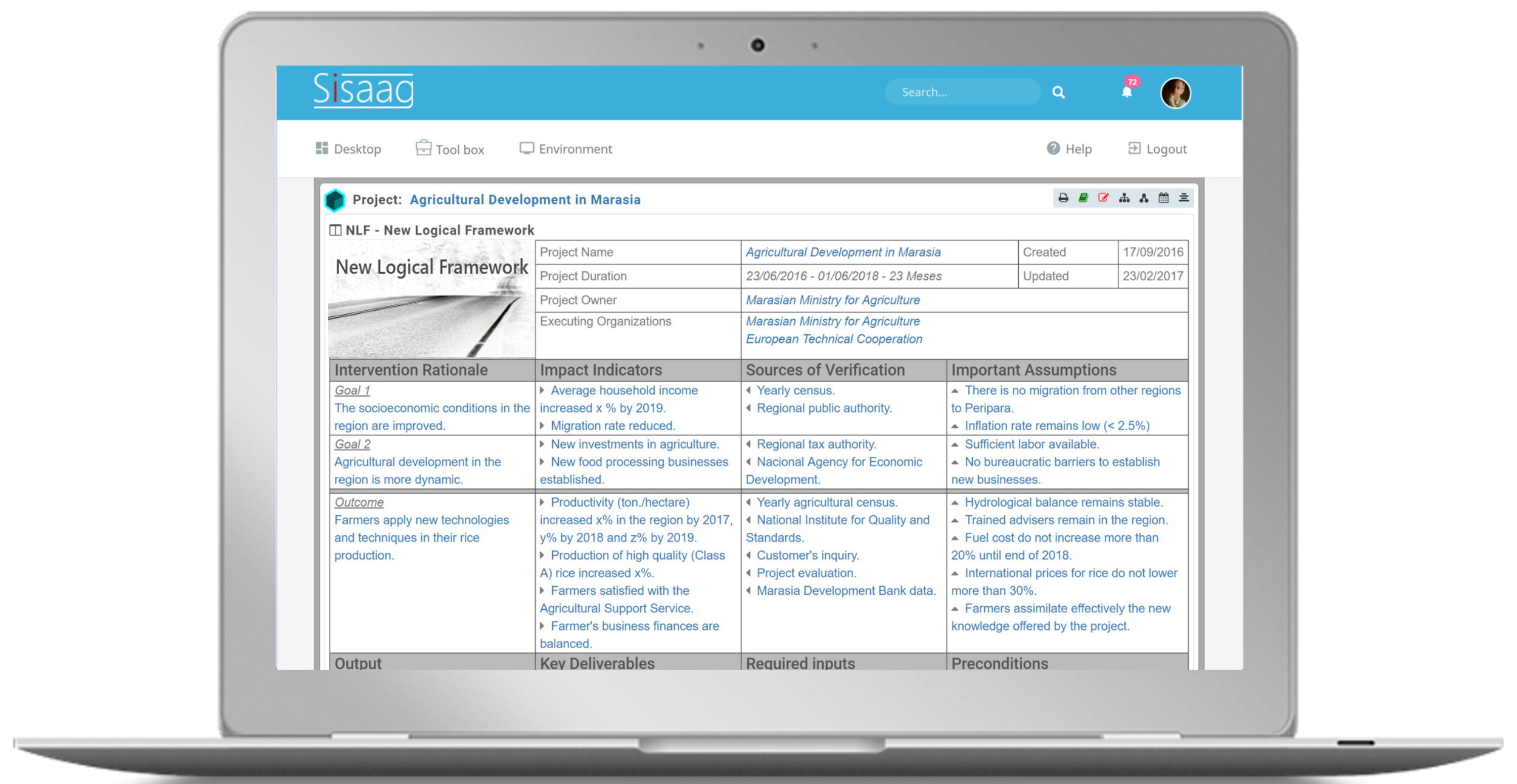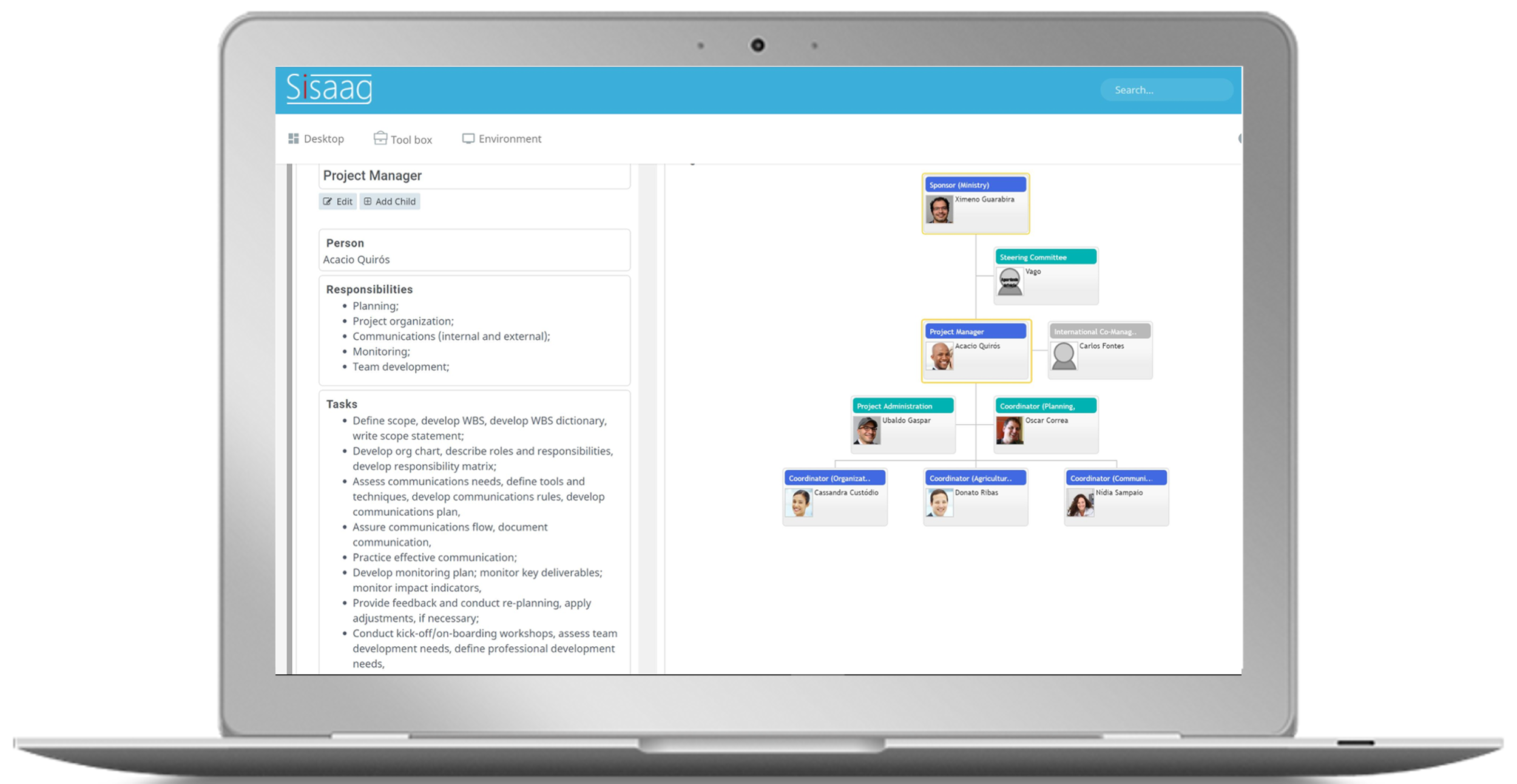What we do
We offer methodological orientation and technical support
for the management of transformation processes.
Methodology
Sisaag is based on a specific management approach for development projects, which uses the New Logical Framework as its principal tool.
Consulting
Focusing on social and organizational development, the consultancy includes advice and support of implementation and change processes.
Training
The training covers the methodology “Management of Development Projects”, the use of the Sisaag application and all the related tools.
Sisaag
is a web-based application to support the management of projects and programs,
using the New Logical Framework.
What is Sisaag?
Sisaag – Management support system is a web-based application to support the management of projects and programs using the New Logical Framework (NLF). It is designed for social and organizational development projects, focusing not only on deliveries, but especially on transformation.
Features
To support the two main project management functions, design and monitoring, see the features.
Using Sisaag
For proper use of the system, it is necessary to perform a preliminary stage, which includes the identification of the problems to be tackled by the project or the needs to be met. It also requires to identify the key stakeholders and their respective interests and potentials. Based on these information, an assessment should be conducted, which becomes the starting point for identifying the desired objectives and the strategy to achieve them.

For Project Design: Building blocks of the New Logical Framework
For Project Governance: OrgChart and Matrix


For Project Monitoring: Status panel
Glossary of Key Terms
This glossary provides definitions of the key terms used in the New Logical Framework approach. A comprehensive online glossary about management of development projects in Portuguese is available below.
| Terms | Definition within the New Logical Framework |
|---|---|
| Goal | Future situation to which the project intends to contribute. Indirect benefits obtained due to the realization of the project. A project can have two goals, one referring to the context which is to be impacted, the other to the organization, its mission and strategies. |
| Outcome | Desired future situation. Describes the changes that occur in the target group or organization. Direct benefits obtained due to the realization of the project. |
| Impact Indicators | Impact or effect Indicators for the goals and outcome, that turn the intended changes explicit. |
| Source of Verification | Where the evidence for an indicator can be found. Only for effect/impact indicators. |
| Assumptions | Factors outside the control of the management, but important to achieve the goals and the outcome. |
| Preconditions | Are considered for the generation process of products and services and are recorded in NLF in terms of outputs. |
| Key Deliverables | Are sub-products of each output (component). Help to outline better the project scope. Are the basis for resource estimation. |
| Inputs (required resources) | Estimation of required resources for each sub-product. May include human resources, material, or financial (investment). |
| Intervention Rationale | The logical chain that includes the set of outputs that lead to a project outcome as a direct effect of the intervention, up to the goals, which express the desired effects in the larger context, as well as in the executing organization, caused by the intervention. |
| Production Rationale | The logical chain that comes from the pre-project requirements, required inputs, through to the key deliverables to the expected result. |
